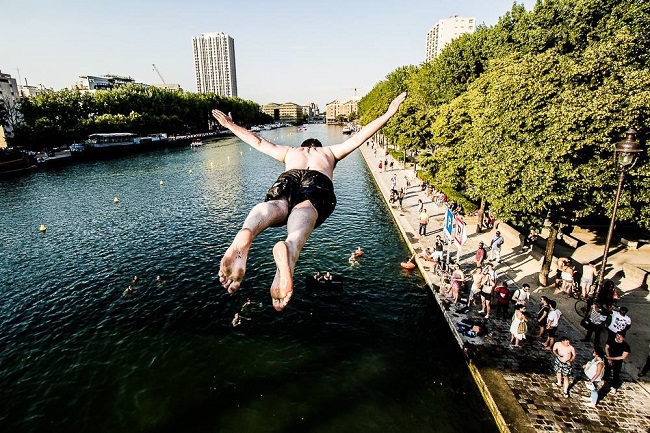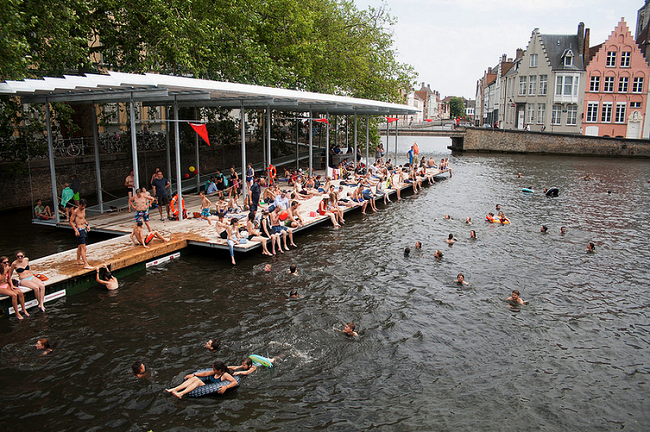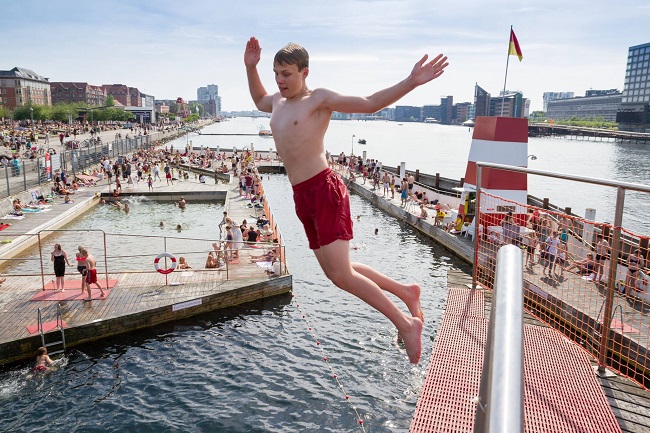

Hacking the river
Urban interventions don’t necessarily always require huge structures or big investment. Activating the existing urban realm and highlighting the growing water-related issues can be as simple as a splash in the river!
Although bathing in rivers is forbidden in France since 1923 (!), a group of Parisians could not resist the opportunity to cool themselves during 2015 heat wave that struck the French capital. These river hackers created the “Laboratory of experimental urban swimming“: a Facebook group where they created events for people to swim together for more safety and fun, as well as sharing similar initiatives throughout the world – to draw attention on the necessity of giving a deeper consideration to water within city development.
Urban swimming is a fun and playful way to re-appropriate the public space, and calling for cleaner environment as well as a new thinking in urban planning that reinvents the relationship of the city with its river. Water issues continue to pose critical threats in urban environment as shown by the recent water shortage crises in São Paulo or Los Angeles. With our ever-increasing urban sprawl, we can only expect these to become more numerous.
In The Social Life of Small Urban Spaces, the american urbanist William Whyte wrote:
“Water should be accessible, touchable, splashable.”
In France urban swimming is forbidden due to perceived issue with pollution and danger. The irony is that since 2002 the Paris city hall hosts each summer “Paris Plage” (Paris Beach), putting sand, deckchairs and parasols along the Seine banks, and hosting ‘seaside’ activities in the city – but dipping your toes into the water is still forbidden. The river banks are some of the most favoured public spaces in the city. Indeed, for families who cannot afford to go on holiday by the seaside during the summertime, it can be a good alternative. The river should not be considered as a simple landscape accessory, but as the weaving heart of the city, accessible by its public.
In the meantime, a lot of cities throughout the world organise activities around their rivers such as Amsterdam, Belgium, Quebec, Switzerland, and The Netherlands etc. the European Initiative Big Jump Challenge, a simultaneous dive in European rivers and lakes aims to draw attention of the European leaders to the necessity of a more sustainable consideration towards water. In London, a temporary pond was implemented in the middle of King’s Cross development site. Comprised of just soil and water: King’s Cross Pond Club is a new art installation in the form of a natural bathing pond, designed by architects Ooze and artist Marjetica Potrčas part of the King’s Cross public art programme RELAY. The UK’s first ever man-made fresh water public bathing pond has its water purified through a natural, closed-loop process using wetland and submerged water plants to filter the water and keep it clear.
[iframe id=”https://player.vimeo.com/video/106807452″]
By gathering examples of urban initiatives – such as the projects below – we can see examples of the ways in which people can interact with a city and its water. The “Laboratory of experimental urban swimming” is making a call for “an unalienable right to swim in cities” that has been denied for too long.
You can follow The Laboratory of experimental Urban Swimming on Facebook or Twitter
Read interviews of the members here and here (in French)
Agile-City previously looked at the theme of direct interaction with urban environment: read about The Playable City challenge


